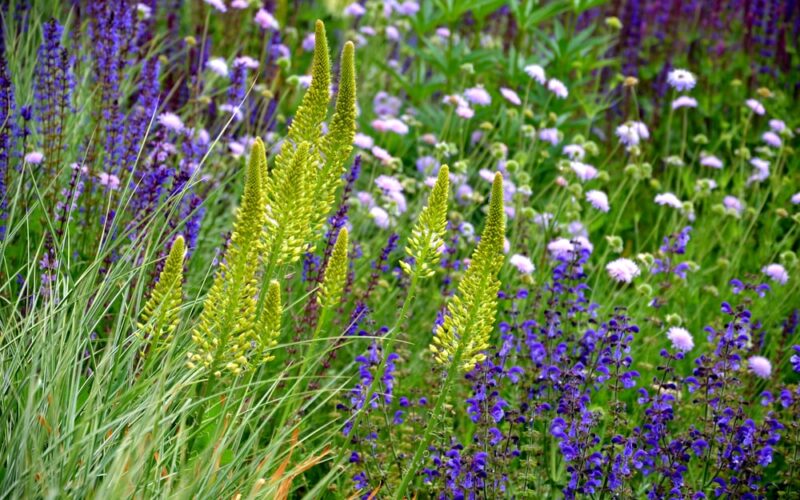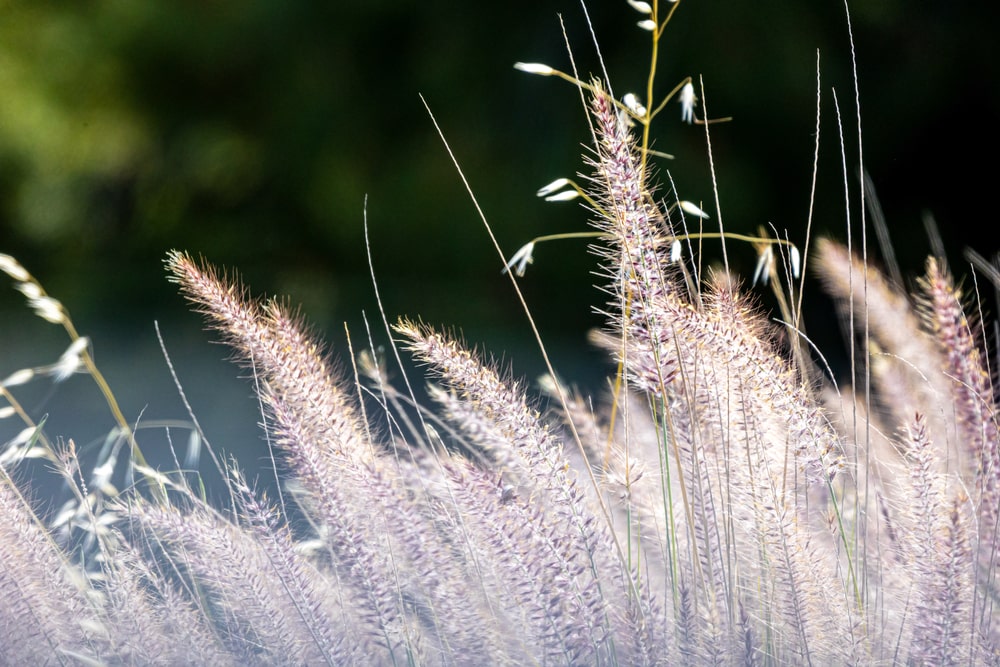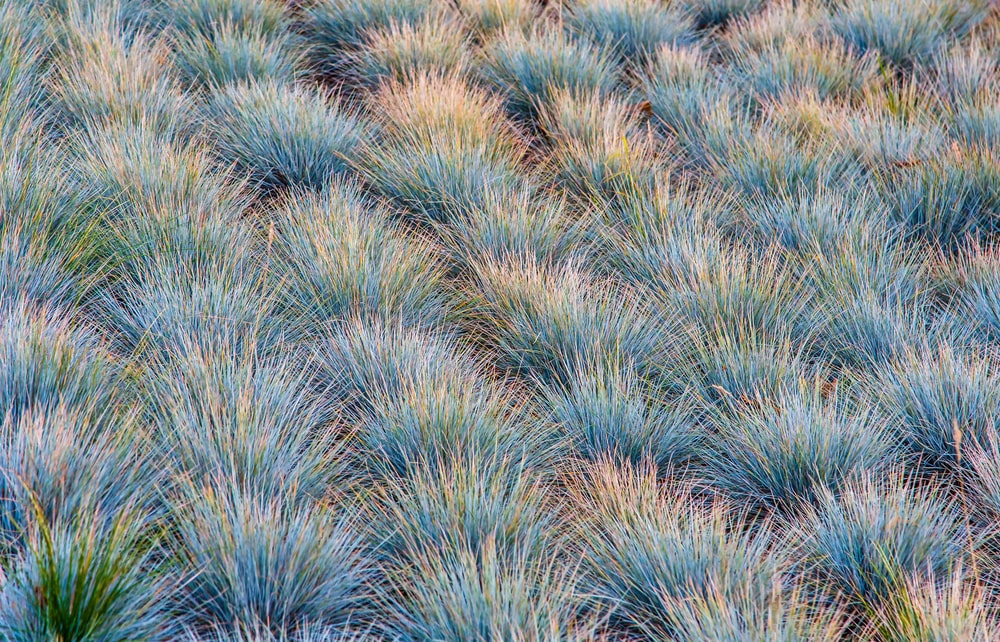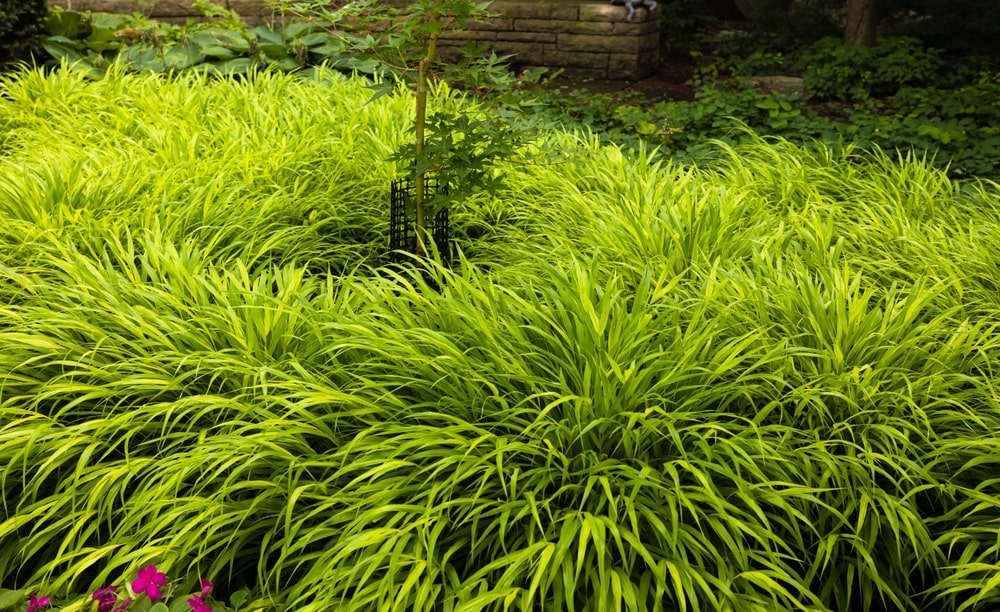Types of Perennial Grasses: What Are They and How to Grow Them

Perennial grass is a staple of any garden. It provides flourishes of color and makes up the healthy, green grass on your lawn—yes, that grass. The grass we all think of when we hear “grass” (a.k.a. turf grass) is a perennial grass.
In this blog, we’re breaking down the different types of perennial grasses and their key characteristics. We’ll also cover common ornamental grasses you can add to your garden to provide some extra beauty and elegance with minimal maintenance. So let’s start with some basic definitions.
What Are Perennial Grass Plants?
There are 2 main types of perennial grasses: ornamental and perennial ryegrass. We’ll review each of them below in more detail.
Ornamental Grass
Ornamental grasses are the most common perennial grasses gardeners work with. They are usually grown for aesthetic purposes.
These grasses are valued for their hardiness and their striking colors and textures. They also require less care than annual grasses.
Perennial Ryegrass
Perennial ryegrass is a tough, fine-bladed grass with a fast germination rate and quick establishment. It is cold tolerant, drought tolerant, able to withstand light shade, and can be used for permanent and temporary lawns.
Perennial ryegrass is often used as a high-quality pasture grass for livestock. And although it germinates quickly, once established, it spreads slowly.

Common Varieties of Ornamental Grass for Landscaping
Feather Reed Grass
Feather reed grass is a narrow, clump-forming evergreen grass that grows up to 6 feet tall. In the spring, feather reed grass has slender, tall flower heads. In the summer, the grass’s flower heads turn golden tan.
This grass is drought resistant and grows best in the sun. It’s a tough plant capable of withstanding a wide range of conditions.

Fountain Grass
Fountain grass prefers sunlight, moisture, and well-drained soil. Its bottlebrush-shaped flowers range in color from cream to pink.
These grasses are mounding plants with soft, feathery plumes and can grow to be 5 feet tall.
Blue Fescue
Blue fescue is a short perennial grass that provides good ground cover and powder-blue foliage in small, 1-foot-tall mounds. This grass grows best in full sunlight or partial shade, and in well-drained soil.

Switchgrass
Switchgrass, or switch grass, prefers sun and well-hydrated soil, but it is also adaptable. It has striking flowers and vibrant colors that can brighten up any garden. This North American prairie grass has hairy plumes and reaches heights of up to 5 feet.
Zebragrass
Zebragrass, or zebra grass, gets its name from the bright yellow bands running down each of its blades. Zebragrass tends to grow upright and reaches heights of up to 5 feet. It grows best in full sunlight and moist, well-drained soil.

Maiden Grass
Maiden grass is an invasive, non-native grass that is still commonly used in landscaping. This grass is not recommended for gardening or landscaping because it displaces native plant species which are key food sources for pollinating insects and other wildlife.
Despite the threat it poses, maiden grass is one of the most common types of perennial grasses, maybe due to the fact that it’s so easy to grow. It’s known for its arching foliage and silvery plumes. Maiden grass thrives in full sunlight with moist, well-drained soil, and it can grow to be up to 8 feet tall.
Japanese Forest Grass
Japanese forest grass is a deciduous perennial grass, meaning it loses its leaves in the winter. It forms dense mounds and thrives in the shade.
This grass prefers rich humus and shady spots with well-drained soil and moderate moisture. Its
height ranges from 1 to 1 ½ feet tall.

Perennial vs. Annual Grass
Annual grasses (e.g. purple fountain grasses) are grasses that need to be replanted every year like all annual plants.
The advantage of annual grasses is that they grow more quickly than perennial grasses, so they’re good for quick fixes if your lawn has bare patches. Perennial grasses (e.g. most of the grass on your lawn) are grasses that don’t need to be replanted every year to grow back.
Perennial grasses can also be decorative, like bamboo and blue fescue, and make your garden look more aesthetically pleasing with minimal maintenance required. They’re fantastic plants to keep in mind when designing your landscaping to add touches of color and texture.
To plant perennial grasses, you have to know your maintenance zone (Central PA is in Zone 6.) Not all perennial grasses can grow in all areas.
Advantages of Perennial Grass
Like perennial flowers, perennial grasses don’t need to be replanted every year. This means they typically require less maintenance and upkeep than annual grasses.
Best Soil for Types of Perennial Grasses
Most types of perennial grasses prefer moist, well-drained soil. However, there are exceptions. Always check your specific variety’s requirements if you are unsure. For example, some perennial grasses thrive best in heavy clay soils.
Ornamental grasses can tolerate a range of soil pH balances, but generally grow best in a pH of 5 to 7. You should test your soil pH if you are concerned that it’s too acidic or basic for perennial grasses to grow.
Perennial Grass Pests
Aphids and mites are the most common insect pests that can harm perennial grass. Healthy perennial grasses are more pest-resistant, so make sure you properly water and fertilize your grass to prevent pest infestations.
Large infestations of aphids and mites can be treated by spraying insecticidal soap or a product containing pyrethrins. Avoid spraying toxic chemicals, as these will kill beneficial insect species like ladybugs that eat aphids and mites.

Perennial Grass Diseases
Rust and powdery mildew are the most common fungal infections that can harm perennial grasses.
Rust manifests as reddish-orange or yellow blisters on the blades of perennial grass. In extreme cases, rust can kill your grass, but usually, the disease can be controlled by disposing of the infected blades.
Powdery mildew, as the name suggests, results in powdery blotches on your blades of grass. Commercial fungicides should take care of powdery mildew if you catch the disease early enough.
Powdery mildew is usually only an issue in shady, overcrowded gardens. To prevent powdery mildew, ensure your perennial grass is adequately spaced out and in a sunny location.
Now that you’ve got the basics down, consider adding perennial grasses to your lawn or garden for that extra touch of color and hardiness year-round.
Need help shopping types of perennial grasses in the Lancaster area? Contact your local home & garden center to chat with our in-store experts for all of your gardening needs.
